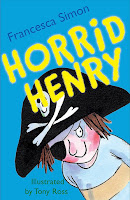TEACHING READING
Reading is a receptive skill that involves decoding and understanding a written text. The reading comprehension is the combination of two processes: first, the mechanical decoding of the symbols that represent the language, which leads to the meaning of the text itself (its linguistic relations); and second, the interpretation of said text based on the reader’s experiences and cultural background, which leads to the meaning of the text within the culture.
APPROACHES TO READING
The two main approaches are:
- PART-CENTERED APPROACH: based on phonics, the students go from the smaller linguistic units to the whole text.
- WHOLE LANGUAGE APPROACH: the focus is on the overall meaning of the text instead of specific units.
Both approaches have benefits and critics, so the solution is the WHOLE-TO-PART-TO-WHOLE APPROACH, which mixes both. It focuses on the alphabetic code but also in the whole comprehension, being flexible with the variability between learners and providing with specific instruction only to those who need it.
LITERACY IN SECOND LANGUAGE
There are many strategies English teachers can use to facilitate literacy in the second language, such as:
- Create a “printed” environment, decorating the class with written posters and facilitating the access to the many uses of print (books, newspapers, letters, etc.)
- Provide opportunities to educate themselves further on a subject by reading.
- Introduce reading and writing with real purposes and not isolated tasks.
- Foster the support to reading and writing skills through orality and strategies.
WHAT IS A GOOD READER LIKE?
Good readers have the ability to preview, question, predict, infer, connect, summarise and evaluate.
Good readers use strategies to understand what they read before, during and after reading.
- BEFORE: use prior knowledge to reflect on the topic and predict possible contents, skim (overview) and scan (look for specific elements) the text.
- DURING: constantly monitor the understanding.
- AFTER: reflect on the content and whether they relate to it, clarify any doubt, further research.
- INITIAL UNDERSTANDING: preview a text, find signal words (key vocabulary, connectors, etc.), find organisational patterns (introduction, arguments, conclusion, etc.)
- FOCUSING ON THE TEXT: extend the vocabulary by creating a word wall in class, use context (clues from the text) to find meaning of unfamiliar concepts, infer meaning from previous knowledge, etc.
- PROGRESSION: highlight the most/least important ideas, visualise the text, etc.
- DRAWING CONCLUSIONS: graphic organisers, make judgements (critical thinking), etc.
- WIDEN READING SOURCES: informational texts, graphical texts, literary texts, following instructions, etc.
- Learn the vocabulary for colours.
- Develop values related to the respect to otherness and the tolerance to difference.
- The teacher presents the book and shows the cover to the students, telling them the title.
- Based on the cover and title, the students can suggest what they think the book will be about.
- Some questions can be provided to spark debate, for example: what animal is Elmer? What color is he? What color are elephants normally? How do you think his life is being multicolor?
- FIRST SESSION: the first contact with the story will be through the teacher. She tells the students Elmer’s story has a lot of colours, so we will find some of them first. The students have a card and colour gomets. The teacher reads the story, every time the students hear a colour, they stick a gomet of that color into the card. This will help them identify key words.
- SECOND SESSION: first, the teacher asks the group what they remember about Elmer’s story. Afterwards, the students read individually. In this session they will read the introduction to the story (who is Elmer, how is his life, etc.) This will foster silent reading.
- THIRD SESSION: first, the teacher asks the group what they remember about the previous session. Afterwards, the students read the core part of the tale (Elmer decides to be grey).
- FOURTH SESSION: first, the teacher asks the group what they remember about the previous session. Afterwards, the students read the ending (the rain comes and Elmer gets his colours back).
- FIRST SESSION: the teacher asks how many gomets they stuck and what are their colours. This will implicitly build the vocabulary list of the lesson.
- SECOND SESSION: after reading the introduction, the teacher asks the students whether their theories about Elmer’s life were correct, why do they think he feels different, and whether that is right or wrong. They will also share what colours they read about, or they saw in the illustrations, and the teacher will write them in a big piece of paper stuck into the wall.
- THIRD SESSION: after learning that Elmer wants to lose his colours, the teacher asks the students how they feel about it, and if they think it’s okay to change just to fit in. Once again, if any new colour comes up, it will be added to the paper.
- FOURTH SESSION: lastly, after the students read about the ending and how Elmer’s strategy doesn’t work, the teacher questions how they feel about it, if they wanted him to stay grey or not, and what would they say to cheer Elmer up.





Comentarios
Publicar un comentario